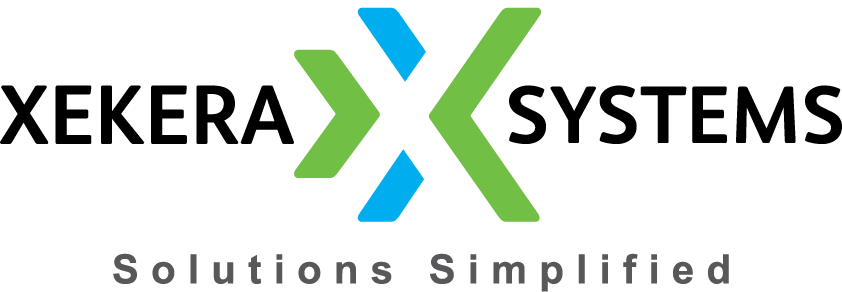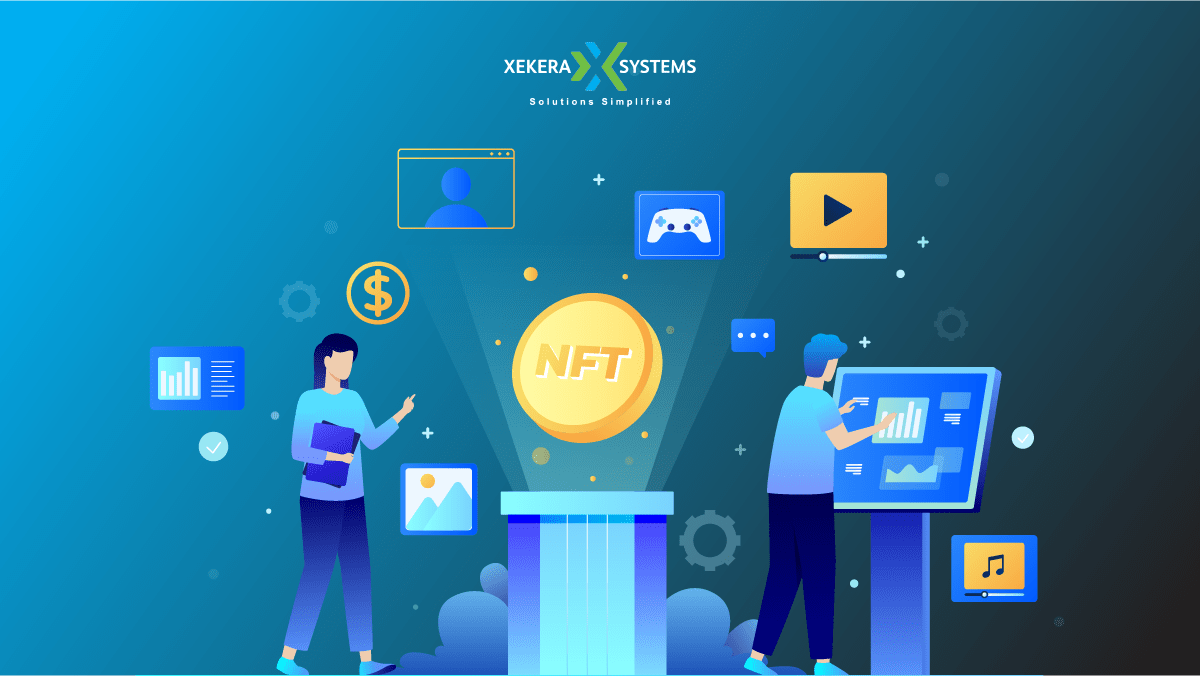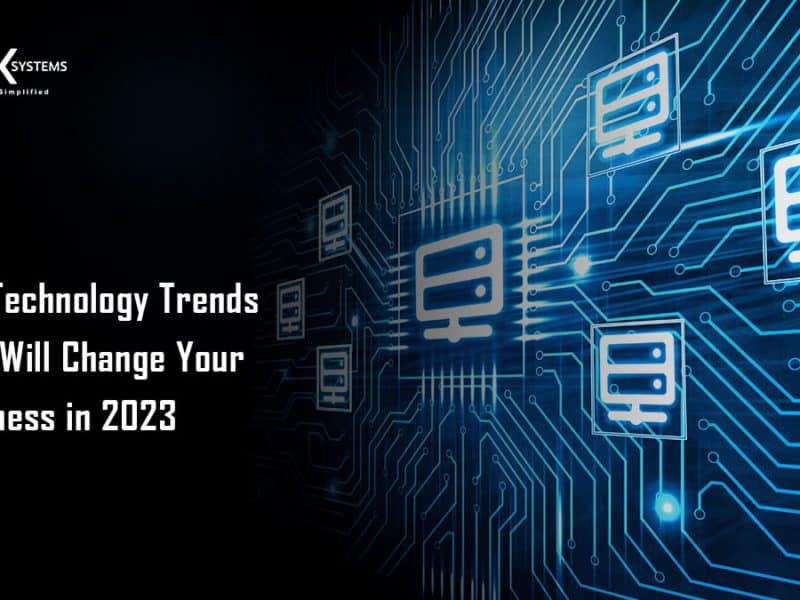Developing an NFT marketplace is a good idea, as the non-fungible token industry has great potential. This market is expected to grow at an annual rate of 35% during the forecast period 2021-2026 to reach USD 147 billion.
NFTs have already become a mainstream phenomenon. This trend can be explained by the increasing number of influencers involved, the emergence of new gaming communities, and the growing demand for digital art.
With so many NFT marketplaces already in existence, this niche can be quite a challenge. However, with an experienced team by your side, you can build your own low-cost platform to attract new users.
But how do you build an NFT marketplace? The article provides an overview of this topic: the creation of an NFT marketplace, its features and related technologies, and the cost of developing such a product. We have experience building blockchain apps. Developing customized NFT marketplace platform is part of our expertise. Keep reading!

NFT Marketplace Key Benefits
NFT uses blockchain technology, similar to cryptocurrencies. This also applies to non-fungible token markets. Therefore, all the benefits of blockchain apply to the digital platform for NFT sales. Let’s look at the main advantages.
Full Transparency
Blockchain technology means that all NFT transactions are visible in a decentralized database. You can think of it as a book of all transactions, showing every action in the market in real time.
Decentralization
Developing NFT marketplace means building a decentralized platform where users can trade their assets freely, without relying on traditional financial institutions, regulators, etc. This decentralization is made possible through the use of blockchain technology.
Indivisible Nature of NFTs
Each NFT has a unique digital ID and special properties. Users will have access to exclusive assets readily available from the Marketplace. Uniqueness makes indivisible tokens highly desirable.
Liquidity
The demand for cryptocurrencies and NFTs is constantly increasing. People appreciate decentralization and the lack of standardized regulation, which is why they are actively investing in digital assets. As a result, many users have increased liquidity in his NFT sector.
Credibility and Unique Ownership
Another advantage of building a NFT marketplace is that you can earn the loyalty and trust of your users. A non-fungible token is a publicly available proof of ownership that can be verified if desired. Therefore, it is impossible to forge NFTs.
High Level Security
Blockchain technology allows the NFT Marketplace to experience all the benefits of best-in-class security features. These features include encryption and consensus algorithms.
What types of NFTs can be listed on the market?
Think of NFTs as digital products and marketplaces as online stores. NFT marketplaces can serve different niches, much like e-commerce platforms do with clothing, home accessories, and more.
You have two main options here. Creating a universal marketplace or niche marketplace. The first lists various types of NFTs, the second only lists non-fungible tokens of a specific type.
Therefore, it is recommended to learn about the types of non-fungible tokens available before starting to develop an NFT marketplace.
Art
These are his NFTs created by a digital artist trying to sell his work at auction while retaining copyright on the art.
Gaming
His NFT in the gaming industry allows users to purchase or receive in-game assets. These assets can then be used in your game or sold.
Media
NFTs in media greatly facilitate the fight against fraud and piracy. For example, celebrities can tokenize their content to authenticate and claim copyright on it.
Music
Her NFTs in the music industry help authors fight piracy and generate revenue from their work.
Real Estate
This is another type of his NFT with virtual land and real estate tokenization. It provides an opportunity to avoid disputes over land and property ownership.
NFT MARKETPLACE FEATURES TO CONSIDER
Developing an NFT Marketplace project involves defining the capabilities of the platform. Here we need to consider both sellers and buyers of digital assets. We have selected the main features of the NFT Marketplace to consider.
Storefront
Over-the-counter is the most important element of the market
Here we collect all the information you need: offers, a detailed description of each NFT, its owner, tariffs, price history, etc.
Advanced Token Search
Essential functionality required for developing NFT Marketplace apps. This feature is useful when users need to find tokens quickly. Here, NFTs should be sorted into categories such as music, photos, and videos.
Filters
The filter is similar in functionality to Advanced Token Search, but includes more categories. This tool helps users identify NFTs, not just types. There are also categories such as price, creator, asset popularity, and new listings.
Create Listing
Allows users of the marketplace to create listings. These can be general lists or wish lists, for example. It would be nice if the entry included information about the NFT, such as: B. Asset title, tags, price, or detailed description.
Listing Status
This feature is important for NFT creators. This allows other users to keep up to date with the current status of your digital work.
Buy and Bid
No E-commerce NFT platform development is complete without Buy and Bid functionality. Make sure to add this option to your marketplace so that users can easily buy and bid on non-fungible tokens.
Wallet
One of the most important features of the NFT Marketplace
It would be useful to integrate the wallet into the marketplace as well. As a result, a user can pay and manage her NFTs without leaving the platform.
Ratings
Implement a rating system to inform marketplace users of the most relevant tokens. This feature is especially useful for crypto newbies.
Auctions
Auctions are an attractive feature even for users who are not ready to trade in the market. This feature helps generate traffic for the platform.
Key Steps in NFT Marketplace Development
Building your own NFT Marketplace solution requires the following steps.
1. Define Your Niche
A better option would be to list the different types of NFTs. This allows you to attract a wider audience.
2. Choose a Blockchain Choose
A blockchain to build your Marketplace. The most popular ones are Ethereum and Binance Smart Chain. The platform can also support multiple blockchains simultaneously.
3. Determine his UI/UX design for the project
Once you have decided on your blockchain and niche, you can think about designing your NFT Marketplace. Make sure the interface is intuitive and user-friendly.
4. Smart Contract Implementation
The next step is to develop the smart contract for the market. To do that, you need to hire professionals who understand regulatory requirements.
5. Secure storage
This step requires NFT creators and buyers to decide where to store their assets. Additionally, you should ensure that records of all transactions are stored securely on the platform.
6. Integration of Third Party Services
A successful NFT marketplace will need to integrate payment gateways, crypto wallets, social media and email services. These are the basic 3rd party tools, but you may need more. The number of integrations depends on your business needs.
7. Marketplace Testing
After developing a basic version of the NFT Marketplace, test it. In this way we fix all the flaws of the platform and complete the product.
8. Launch NFT Marketplace
This is the final stage of launching and continuing to support the marketplace. We must constantly improve our platform and adapt it to the needs of our users.
NFT Marketplace Design Best Practices
Good NFT web design suggests simplicity and intuitiveness. When developing an NFT art marketplace, we should also pay attention to the major design trends in the cryptocurrency industry.
- Use of dark backgrounds
- Use of bright colors such as purple, pink, yellow
- Use of futuristic elements in design
But first and foremost, the platform should meet the needs of all users, from novices. Be an NFT expert.
- Thoughtful User Experience
- Straightforward User Interface
- Consistency Across Platform: Fonts, Colors, Buttons, Layout Structure, etc.
- Responsive Design
NFT Marketplace Architecture
To make the NFT Exchange development as smooth as possible, we created this I have listed the main components of such a platform. We’ve divided them into two groups: architectural elements and third-party integrations.
The main architectural components are:
Marketplace application: This is a mobile or web application for buying and selling NFTs.
Wallet: A service for storing, exchanging, and transmitting digital assets.
NFT metadata: It contains details of each non-fungible token on the platform.
IPFS: An InterPlanetary File System is required to store data from distributed networks.
Smart contract: These technologies provide a unique identifier for each non-fungible token.
Blockchain: This is the foundation on which the market is built. Stores information about all transactions on the platform.
THIRD PARTY INTEGRATIONS MAY INCLUDE:
Infura.io: This service gives you access to the Ethereum blockchain.
Ethereum: This is the world’s most popular blockchain on the NFT marketplace.
CoinMarketCap: A price tracking service for the cryptocurrency market.
NFT Marketplace Tech Stacks Used
These are the technologies that can be used to develop NFT Marketplace solutions.
- Frontend: JavaScript, js, Vue.js.
- Backends: Python, Express.js, Node.js.
- Mobile Entwicklung: Swift, Kotlin, React Native.
- Databanks: MongoDB, MySQL, PostgreSQL.
- Cloud-Speicher: Amazon Web Services.
- Smart Contracts: Solidity, Drizzle, Ganache, Brownie.
How much does it cost to create a NFT Marketplace website?
In order to calculate the approximate NFT market cost, we have divided the process of creating MVPs for such products into separate phases.
Phase 1. Discovery Phase, Estimation and Research, UI/UX Design
A thorough analysis of the business concept to understand the requirements the NFT product needs. This phase involves selecting an NFT market development team, defining required and optional features, communicating market and customer research, and building a prototype. After completing this discovery phase, you will have a better understanding of your core goals, audience, scope, and challenges.
Stage 2. Development
NFT Marketplace Developers create the architecture and link databases to data flows.
At the same time, UX/UI designers create the interface for the NFT platform. We are also adding sync to the cloud to improve the overall user experience. Next, we will consider basic functions and additional functions separately.
Get free consultation for NFT development
Step 3. Test
Once the MVP is complete, it should be tested for errors by a QA specialist. Therefore, to ensure the high quality of the product, it is necessary to solve the problems found.
Contact us for free consultation.
Step 4. Market development and technical documentation
Market your MVP and see how users respond. If your marketplace app is successful, you can gradually extend its functionality and improve it in every conceivable way. In this phase, we create a document containing all necessary information about the application.
Get free quote for Market development and technical documentation cost.
NFT Marketplace Development Challenges
The NFT virtual gallery development process can present several challenges. Learn about them and anticipate the difficulties that may lie ahead.
Smart Contract Integration
Smart Contracts are the latest technology in the Fintech world. Implementing them and guaranteeing users a flawless trading experience requires a thorough understanding of the technical and regulatory requirements.
Lack of Experienced Blockchain Technology Specialists
Blockchain technology is just beginning to gain momentum
For this reason, there are still few experienced specialists who can build platforms based on blockchain.
User Onboarding
The problem with many of his NFT Marketplaces is that the creators do not consider inexperienced users. As a result, new users often leave the platform because they do not understand how to use it.
Final Thoughts on NFT Marketplace Development
App development like OpenSea can be very lucrative given the rapid growth of the NFT market. Such markets attract a large number of users due to decentralization, high level of security and the opportunity to own their own digital assets.
However, developing an NFT marketplace can be very difficult. You need to implement smart contracts, use blockchain as the basis of your project, and securely store user identities and transaction data.
Hiring a developer who knows how to create an NFT Marketplace makes life a lot easier. Xekera Systems has talented people, many of whom have experienced in blockchain and fintech. Contact our team if you are interested in creating your own NFT Marketplace.



